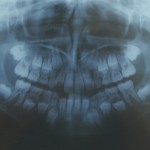
Research and modern approaches to caries management have moved away from complete caries removal towards more conservative approaches. These involve limited or selective removal of carious tissue sealing of cavitated lesions and use of remineralisation techniques reducing the potential for pulp damage and preserving pulp vitality.
The aim of this review was to evaluate the clinical, radiographic, and bacteriological outcomes of techniques and materials used for the management of deep caries in immature permanent teeth.
Methods
A protocol was registered with PROSPERO. Searches were conducted in the Cochrane Central Register of Controlled Trials (CENTRAL), Medline, Embase, LILACS, clinicaltrials.gov, OpenGrey and the National Research Register, and Pro-Quest Dissertation Abstracts and Thesis databases. Randomised controlled trials (RCTs) and Controlled Clinical Trials (CCT) reporting on any vital pulp treatment (VPT) technique (direct pulp capping, indirect pulp capping, selective caries removal in one stage, stepwise excavation, partial and full pulpotomy) and/or any technique or medicament with a minimum of 10 cases and at least 12 months follow up were considered. Study selection, data extraction and study quality assessment were carried out independently and in duplicate by two reviewers. The Cochrane risk of bias tool 2.0 was used. Mean values and range of success rates of the technique or the medicament used, and mean percentage rate of continuation of root development and apical closure were reported. Meta-analyses were conducted with dichotomous data reported as ratios (RRs) with 95% confidence intervals (Cl).
Results
- 12 papers from 11 study cohorts were included.
- 5 were split mouth and 7 parallel group RCTs involving a total of 614 patients (791 teeth).
- 7 studies involved a single operator, one two operators with 3 not providing a number.
- All studies were conducted in a university or dental college environment.
- Pulpotomy (PP) was evaluated in 7 studies, direct pulp capping (DPC) 2 studies, indirect pulp capping (IPC) one study and 2 stepwise excavation papers belonging to the same study cohort.
- Mineral Trioxide Aggregate (MTA) was used in 10 studies,
- 4 studies were considered to be at low risk of bias, 2 at high risk and 6 at unclear risk
- 2 papers evaluated DPC with an overall success rate of 98% with one paper reporting 98% continuation of root development at 24 months.
- A 93.5 % success rate was reported in the one paper evaluating IPC.
- 7 papers evaluated PP with an overall success rate for various medicaments = 93.6% (range71% to 100%). The highest success rate was seen with MTA for clinical success 4% (range: 89%- 100%). The overall rate for continued root development with PP was 90.9% at 12 months and 97.3% at24months
- Meta-analyses were comparing MTA with other pulpotomy materials showed no statistically significant differences in success rates (see table).
| No. of studies | Odds ratio (95%CI) | |
| MTA v Calcium hydroxide | 2 | 2.02 (0.27 to 17.89) |
| MTA v Bioceramic materials | 2 | 0.48 (0.04 to 5.63) |
| MTA v all pulpotomy materials | 6 | 0.68 (0.21 to 2.18) |
Conclusions
The authors concluded: –
All treatment modalities for PP were equally efficient with high overall success rates. Biodentine showed high success rates regardless of technique. No significant differences were found in the clinical and radiographic success rates between various follow-up intervals. There are no clear conclusions regarding superiority of either VPT technique on apical closure
Comments
The review authors pre-registered a protocol and undertook a search of a wide range of major databases. The focus of the review was the management of deep caries in vital immature permanent teeth. Previously we have recently considered reviews of vital pulp therapy in permanent teeth (Dental Elf – 24th Sep 2021) and a Cochrane review looking at different options for managing dentine caries in permanent and primary teeth (Dental Elf – 21st Jul 2021). Success rates from the various reviews were similar however the quality of the primary studies in not good for example only 4 of the 12 studies included in this current review being at low risk of bias. Only a small number of studies were available for some of the techniques under investigation and the criteria for clinical and radiographic success and failure varied across the studies as noted by the authors. Consequently, the findings should be viewed cautiously. While the majority of caries management is conducted in primary care all the studies included in this review and the majority in other reviews took place in secondary care settings. In future more studies should be conducted in primary care following the SPIRIT and CONSORT statements and using a common outcome set and consider patient relevant outcomes as well as effectiveness and cost-effectiveness.
Links
Primary Paper
Tong HJ, Seremidi K, Stratigaki E, Kloukos D, Duggal M, Gizani S. Deep dentine caries management of immature permanent posterior teeth with vital pulp: A systematic review and meta-analysis. J Dent. 2022 Jul 3;124:104214. doi: 10.1016/j.jdent.2022.104214. Epub ahead of print. PMID: 35793760.
Other references
Dental Elf – 24th Sep 2021
Dental Elf – 21st Jul 2021
Dental Elf – 28th Oct 2019
Dental Elf – 22nd Jul 2019
